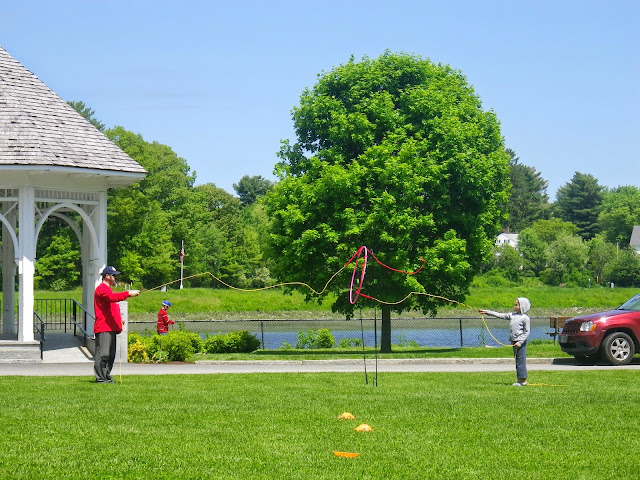We all know there are thousands of fly-casting instruction books and videos. If you have read any of these books, or if you have watched videos, you soon realize the instruction has become manualized. In other words, a repetitive process of familiar concepts, following a set off steps. Don't misunderstand me, I am not saying this is wrong. In fact, the physical and mental process of effective fly-casting is all about repeating good mechanics. What I would like to say, and the purpose of this post, is to inform the angling community of the following:
- All safe casting starts with your ass and back muscles (did I catch your attention?).
- If you can learn how to engage the back, you will build a platform for all casting styles and techniques.
Did I just state that all safe casting starts with your ass and back muscles? Yup, I said it, and I am probably going to catch hell for it. But, I have good reasons to make such a bold statement -- please try to follow along. I have spent the last decade of my life reading fly-casting books-websites-blogs, watching videos, and physically auditing fly-casting classes. I have traveled the world and fished in a variety of environments/conditions -- forcing me to learn new techniques and pushing my body to extremes. I have taught hundreds of casting classes, watching anglers bio-mechanics. In the real world, I have watched anglers painfully cast in 40 knot winds of Patagonia -- you can easily hurt yourself doing this for ten hours per day. Add it all up, I have never read, seen, or heard anyone tell an angler to practice safe body casting mechanics -- to use his/her ass and back muscles. Why is that? Why is no one, including legendary guides, instructors and authors not telling people to be safe casters first -- to engage their major muscles? Is it just an obvious over-sight?
We have been exposed to tons of casting instruction. Instruction can range from advance physics, to basic ten o'clock to two o'clock movement. Physically, we are taught the casting stroke is a compound movement between the shoulder, upper arm, elbow, lower arm and the wrist. This is absolutely true, but none of this would be happening if the angler did not properly engage the major muscles in his/her buttocks and back. Think about that for a second and now ask yourself the following: can an angler cast a fly-line +50 feet by using only his/her wrist? The obvious answer is no; just as a golfer can't hit the ball three hundred yards utilizing a putting stroke. Hopefully by now, I have you thinking about your own casting stroke -- do you use your bum and back, or are you an arm and wrist caster?
When I teach fly-casting lessons, in addition to the technical stuff, I preach safe body mechanics. Why? Based on my experience:
- The foundation for all safe fly-casting techniques begins with the bum and back -- not the compound movement of the shoulder, arm and wrist.
- As an angler attempts to cast line at longer distances, the utilization of power (i.e. force and acceleration), combined with safe-proper technique, becomes critical to your casting performance and your physical health (see #3).
- I have seen too many people get hurt using poor, un-safe physical technique.
In the fly-fishing industry, unless someone proves me wrong, I believe I am the only one saying, "all safe casting begins with your ass and back." Obviously, I do things differently -- I doubt any books or videos will be produced. As a guide and a certified IFFF casting instructor, I realize I am suppose to teach/talk about tight loops -- when the time is right, I can teach you all about tight loops, and even teach you to cast line 100ft. For now, I am more concerned with your casting bio-mechanics and physical wellness -- a tight loop does you no good when poor technique leads to inflammation of the wrist, elbow, shoulder or neck.
Interested? I have developed a series of classes, all designed to maximize your performance and protect your body. If you would like to take lessons, please visit:
Final Word
Thanks for reading. Please, I welcome any and all constructive feedback.
Mark
PS. For the record, there are a few short distance casting strokes that do not require much bum and back energy -- they tend to be more shoulder, arm, and wrist type cast. Regardless, I tend to over-protect my students by building a foundation that will enable them to safely attempt more advance casting strokes and techniques.
- Human casting physiology can not be manualized -- but safe casting instruction can.
- All levels of instruction must focus on body safety -- learn to engage the back.
- Be safe, we are not getting any younger -- be kind to your body.
Thanks for reading. Please, I welcome any and all constructive feedback.
Mark
PS. For the record, there are a few short distance casting strokes that do not require much bum and back energy -- they tend to be more shoulder, arm, and wrist type cast. Regardless, I tend to over-protect my students by building a foundation that will enable them to safely attempt more advance casting strokes and techniques.
;


